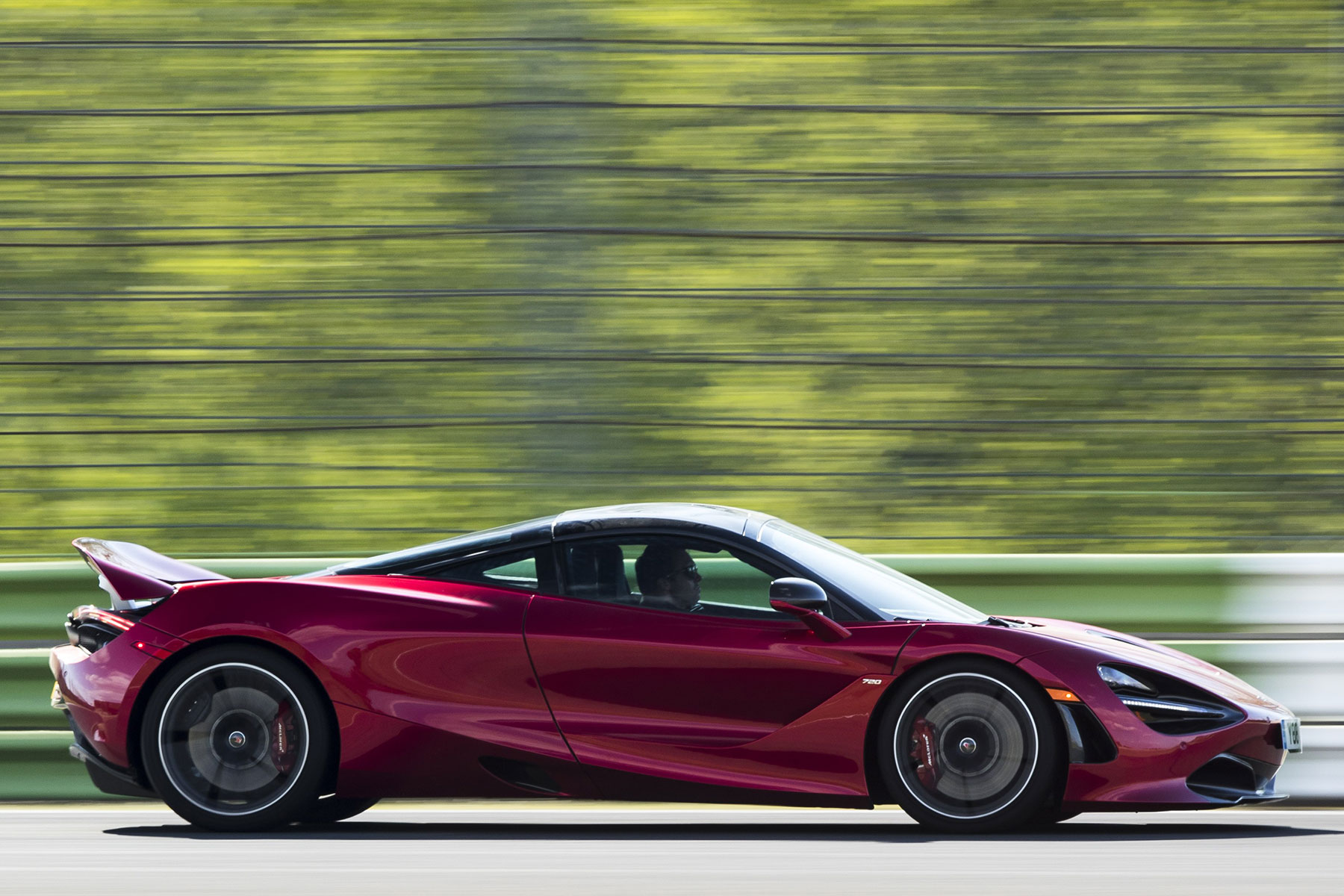
The email arrived late on a Friday afternoon. Would we like to borrow a McLaren 720S for a week? I pondered the question for all of about 0.01 seconds. Sure, go on then…
For the uninitiated, the McLaren line-up is split into three tiers. The entry-level Sports Series comprises the 540C, 570S, 570S Spider, 570GT, 600LT and 600LT Spider. Above that comes the Super Series: 720S, 720S Spider and forthcoming 765LT. And the suitably named Ultimate Series tops the range: Senna, Senna GTR, Elva and Speedtail. Got all that?
The 720S, then, is the middle-ground, but assuredly not middle-of-the-road. Figures of 2.9 and 212 – I’ll let you work out the appropriate suffixes – are testament to that.
We first drove the 720S on road and track at last year’s launch, declaring it ‘the new supercar benchmark’. How does it fare as a daily-driver? Here’s what we learned.
It’s brutally, brilliantly fast
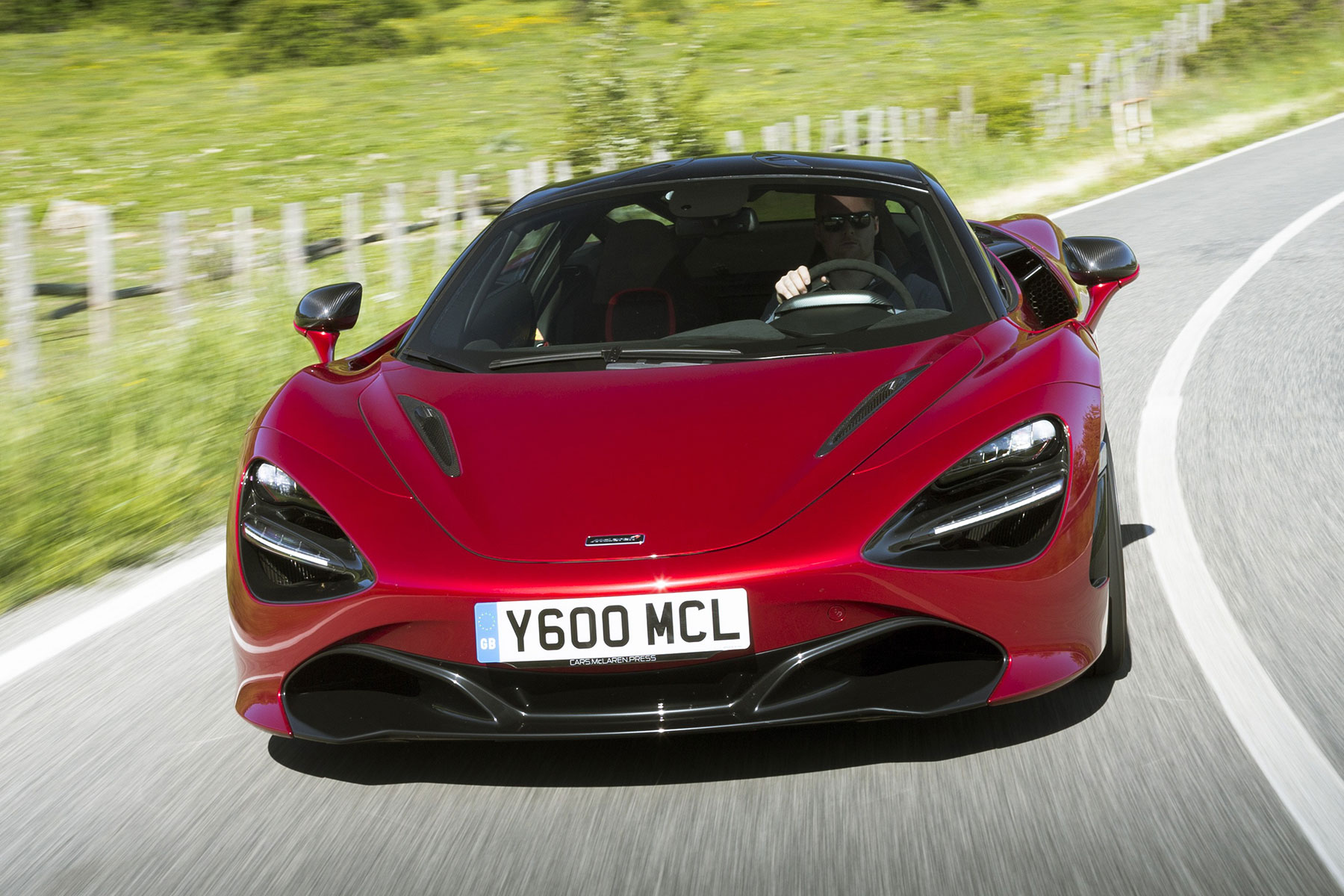
Back in 2013, McLaren launched the P1: a limited-run hybrid hypercar with an £866,000 price tag. It blasted to 124mph (200kph) in 6.8 seconds and annihilated a standing quarter-mile in 9.8 seconds.
Amazingly, the series-production 720S is scarcely slower – 7.8 seconds and 10.3 seconds – yet costs £218,020. Relatively speaking, it’s a bit of a bargain.
The 720S is too fast for the road, no doubt. Opportunities to fully flex your right ankle are few and frustratingly far-between, especially in the south east of England. But then, very occasionally, the traffic clears, the planets align and oh my Lord. The 720hp 4.0-litre V8 is a furious force of nature that seizes hold of your senses.
Car journalists often wax lyrical about naturally aspirated engines in sports cars. And yes, there is joy to be had in wringing every last rev from an NA motor. However, the tremendous mid-range wallop of the turbocharged McLaren is equally addictive – and easier to exploit in the real world.
It stops as quickly as it goes
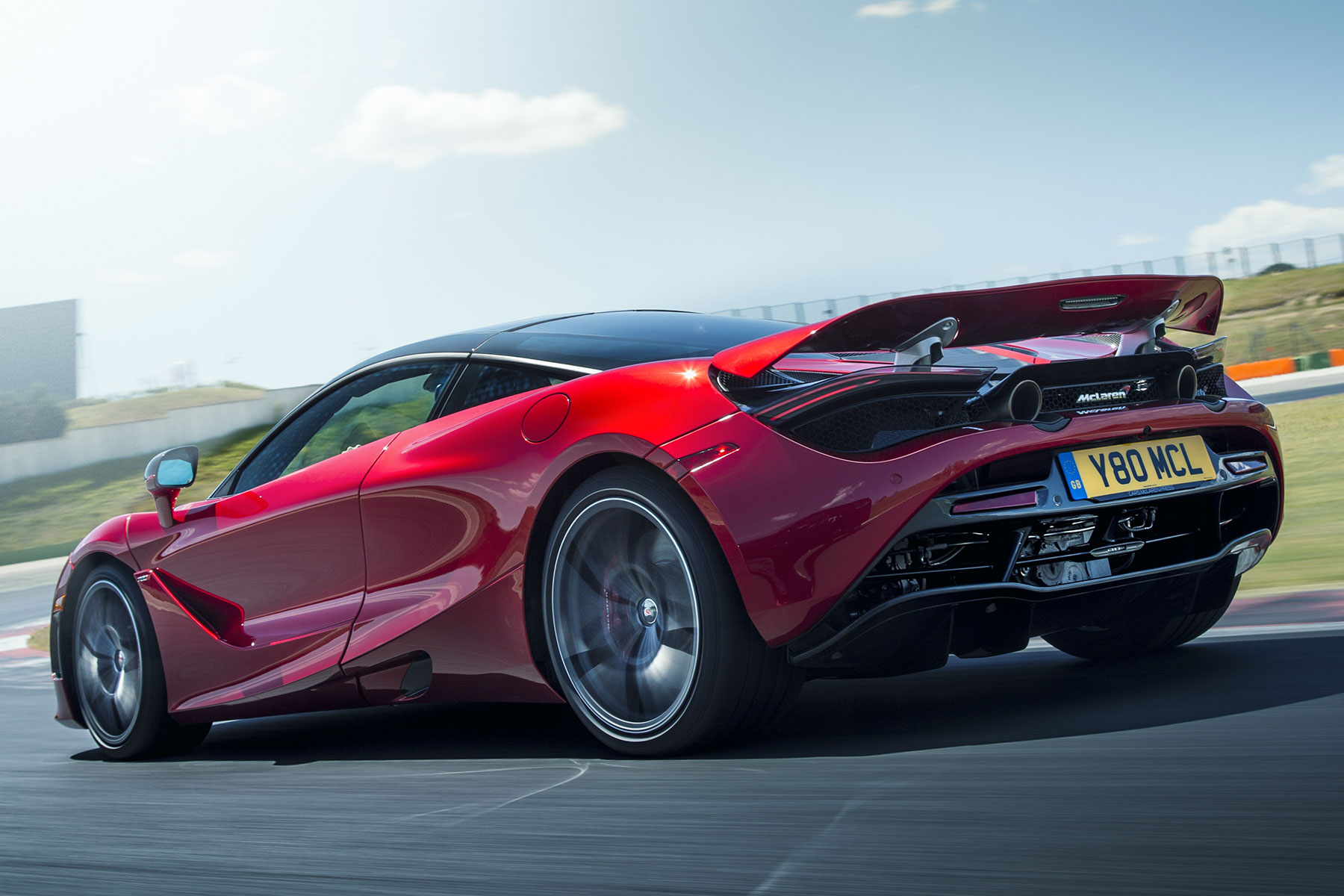
A Porsche engineer once explained to me that its cars are engineered to decelerate as quickly as they accelerate. In other words, if a 911 hits 62mph in 3.5 seconds, it must stop to a standstill in the same period of time.
The 720S exceeds this target, braking from 62mph to zero in 29.7m and 2.8 seconds – 0.1 seconds less than it takes to get there. Huge carbon-ceramic discs also stop the 720S from 124mph (200kph) in 117m and 4.6 seconds, and from 186mph (300kph) in just 260m and 6.9 seconds, aided by an active rear spoiler that deploys as a near-vertical airbrake.
Such stopping power is hugely reassuring in a car so swift. And here too, the 720S is within a hair’s breadth of the epochal P1.
The steering is sublime
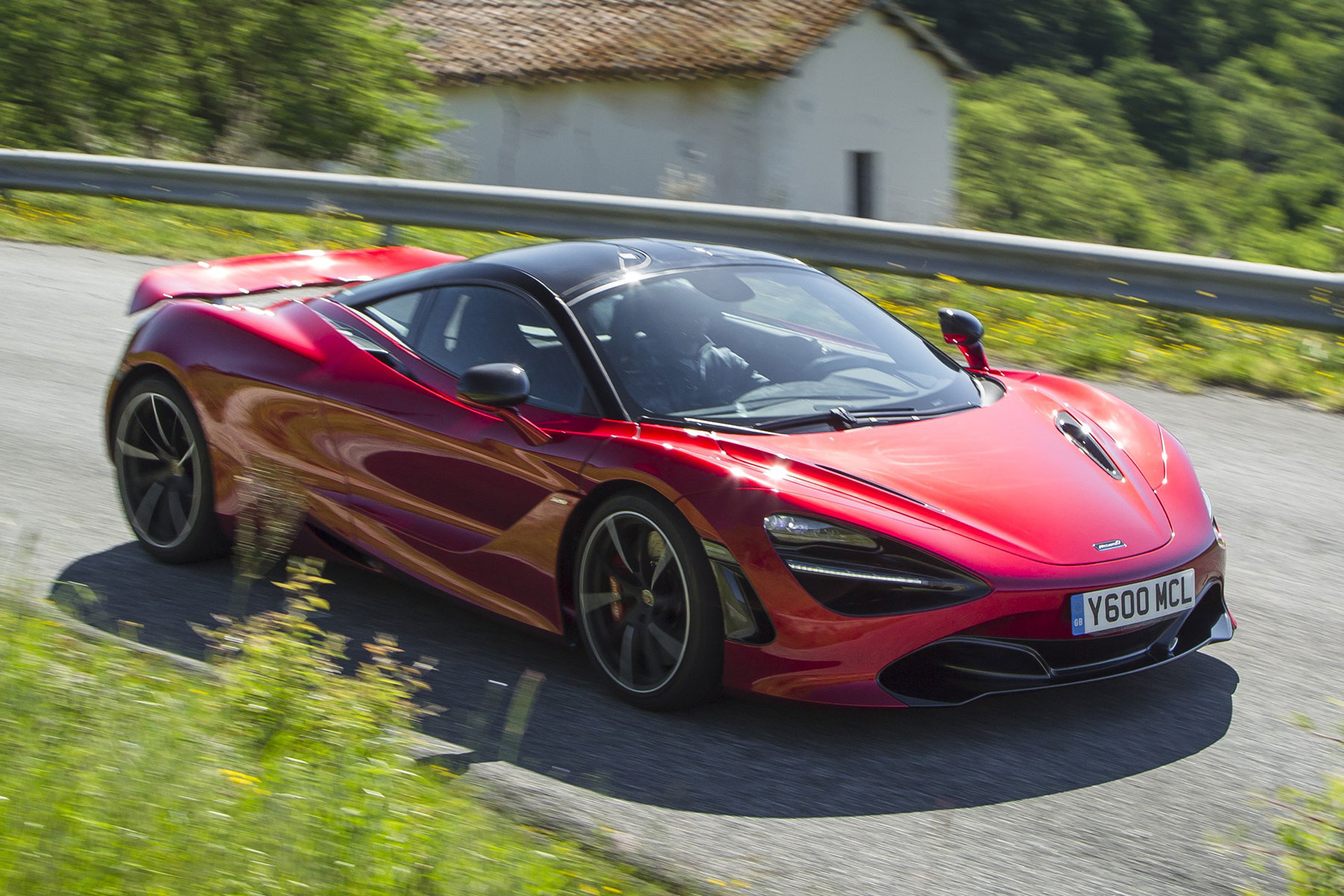
With a few very minor exceptions, McLaren is the only carmaker that persists with hydraulic power steering. Even Ferrari has shifted to fuel-saving electric steering for its latest sports cars.
The advantage of a hydraulic rack is a proper, physical connection between the palms of your hands and the rubber on the road. High-pressure fluid is used to turn the wheels rather than an electric motor, and the result is usually more faithful feedback and enhanced steering feel.
The 720S has superb steering, its flat-bottomed wheel communicating every nuance of the road surface and residual grip. Frankly, in a car that manages 26.4mpg (and high teens in the real world), I’m glad McLaren decided to forgo electric assistance. Sipping fuel is hardly this car’s raison d’être.
The soundtrack is quite sensible
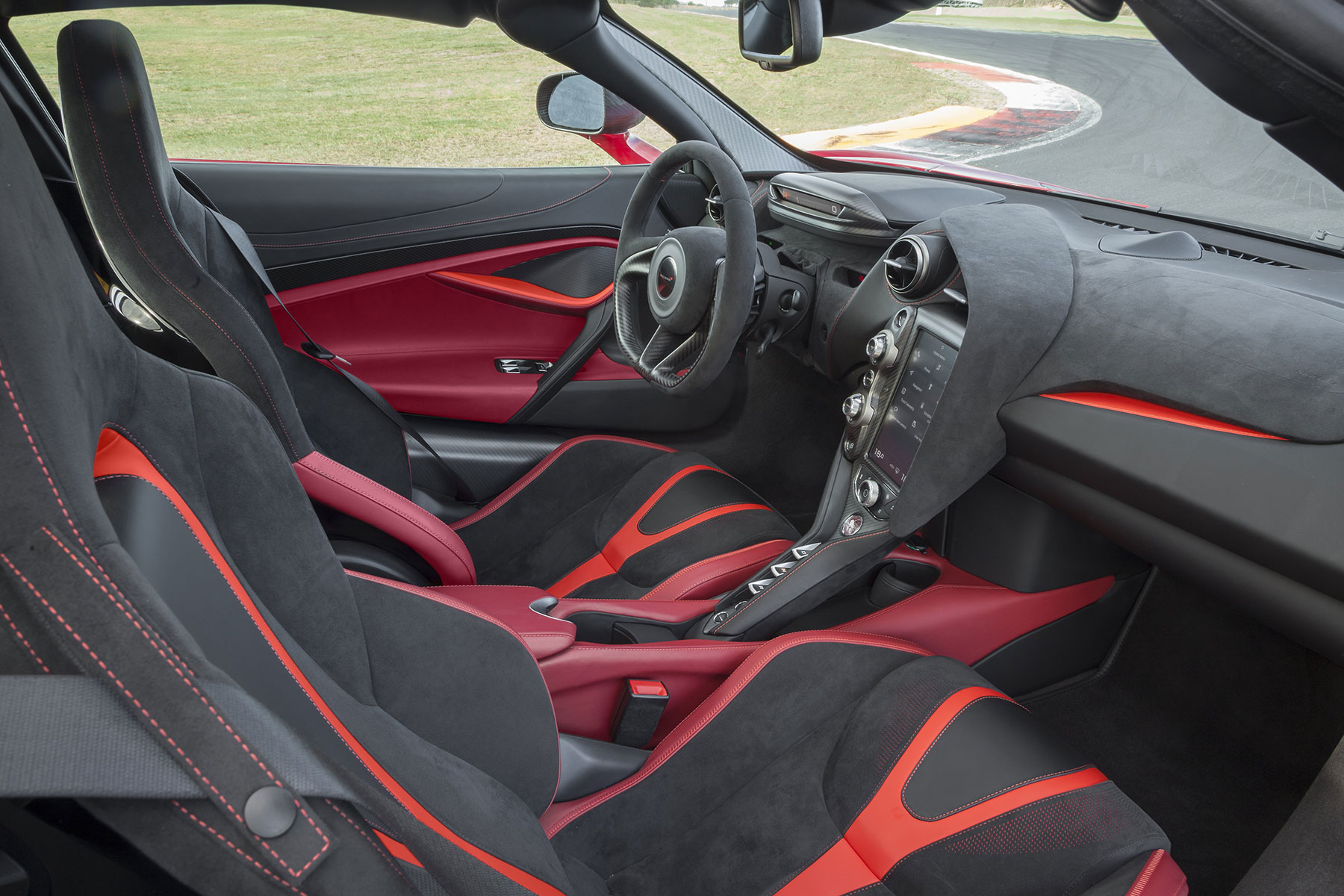
Actually, that’s not strictly true. The McLaren will serve up throttle-blipping theatrics on start-up, but only if you jump through several hoops first. Turn on the ignition and switch chassis and powertrain settings to Track mode. Then put your foot on the brake and press the starter button. A squirt of fuel is injected – then ignited – in the exhaust and BRAAAAP! the 720S starts with all the subtlety of a shotgun. A little immature perhaps, but fun.
Fire-up the 720S normally and it will still wake up your neighbours. But it isn’t deliberately, absurdly OTT like a Lamborghini or Jaguar F-Type SVR. Pops and bangs from the twin exhausts are fairly muted, the soundtrack dominated by the whoosh of the twin-scroll turbochargers. It sounds potent and purposeful, both mechanical and slightly synthetic.
Ultimately, the 720S doesn’t deliver the aural fireworks of a Ferrari V8 or Lamborghini V10. But after a week of living with one, I’m convinced that’s fine. You can have too much of a good thing, after all.
It’s the right size for UK roads
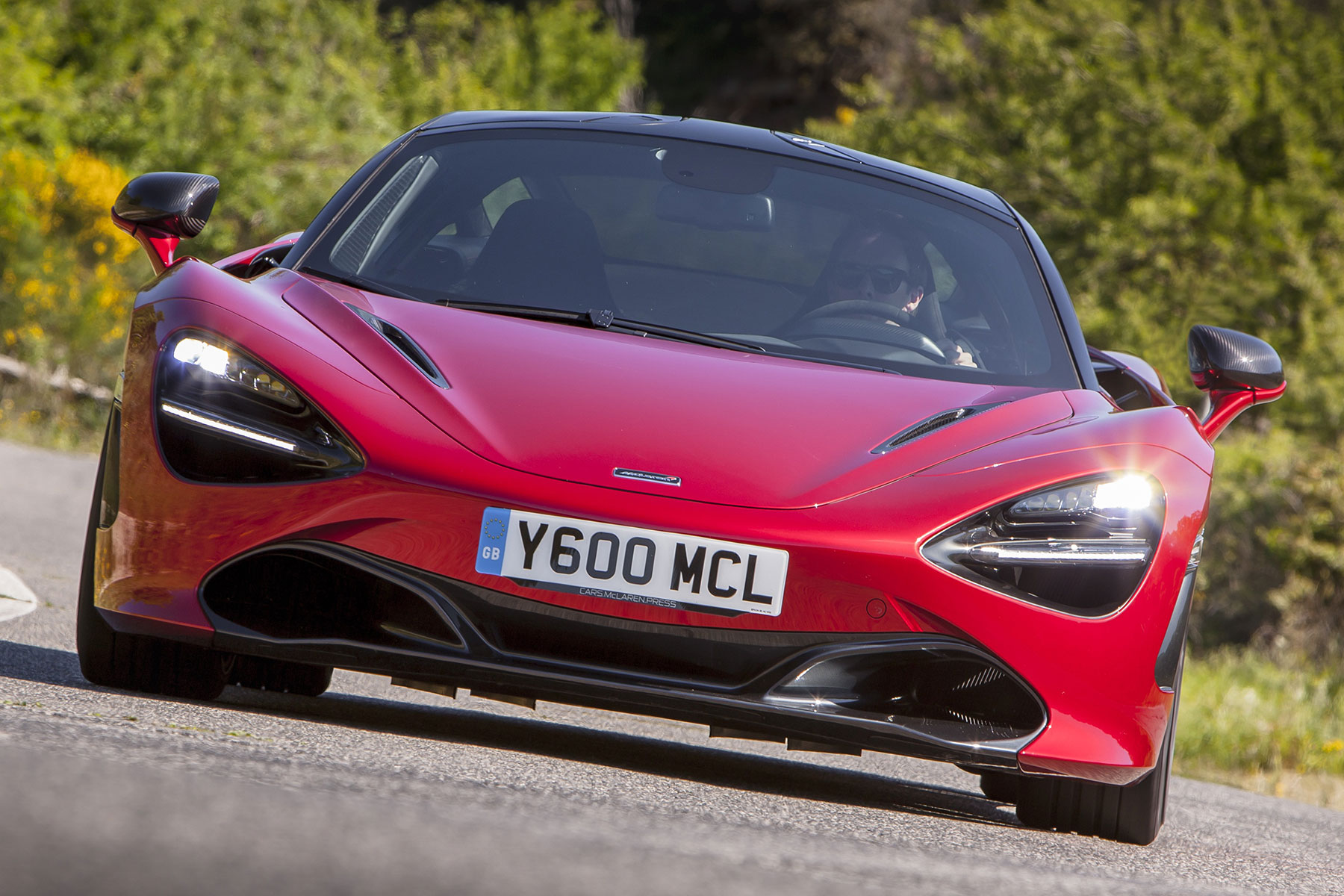
One of my personal bugbears is the sheer size of modern cars (and don’t get me started on SUVs). They grow larger with every passing generation, unlike our cramped and crowded streets. Many of today’s supersized supercars feel simply too wide for a British B-road.
The 720S is no Lotus Elan, but a fairly modest footprint means you can carry speed with confidence where others are forced to slow down. At 1,930mm, it’s actually 165mm narrower than its 570S sibling, and 254mm shorter and 100mm narrower than a Lamborghini Aventador. On the B488 in Bedfordshire, those millimetres matter.
Special mention also goes to the McLaren’s interlinked, ECU-controlled hydraulic suspension, which obviates the need for anti-roll bars. It’s far too complicated to explain here (indeed, it was the subject of a PhD thesis) – suffice to say it makes the 720S both pliant and utterly planted on challenging tarmac.
Drift mode is a tad daunting
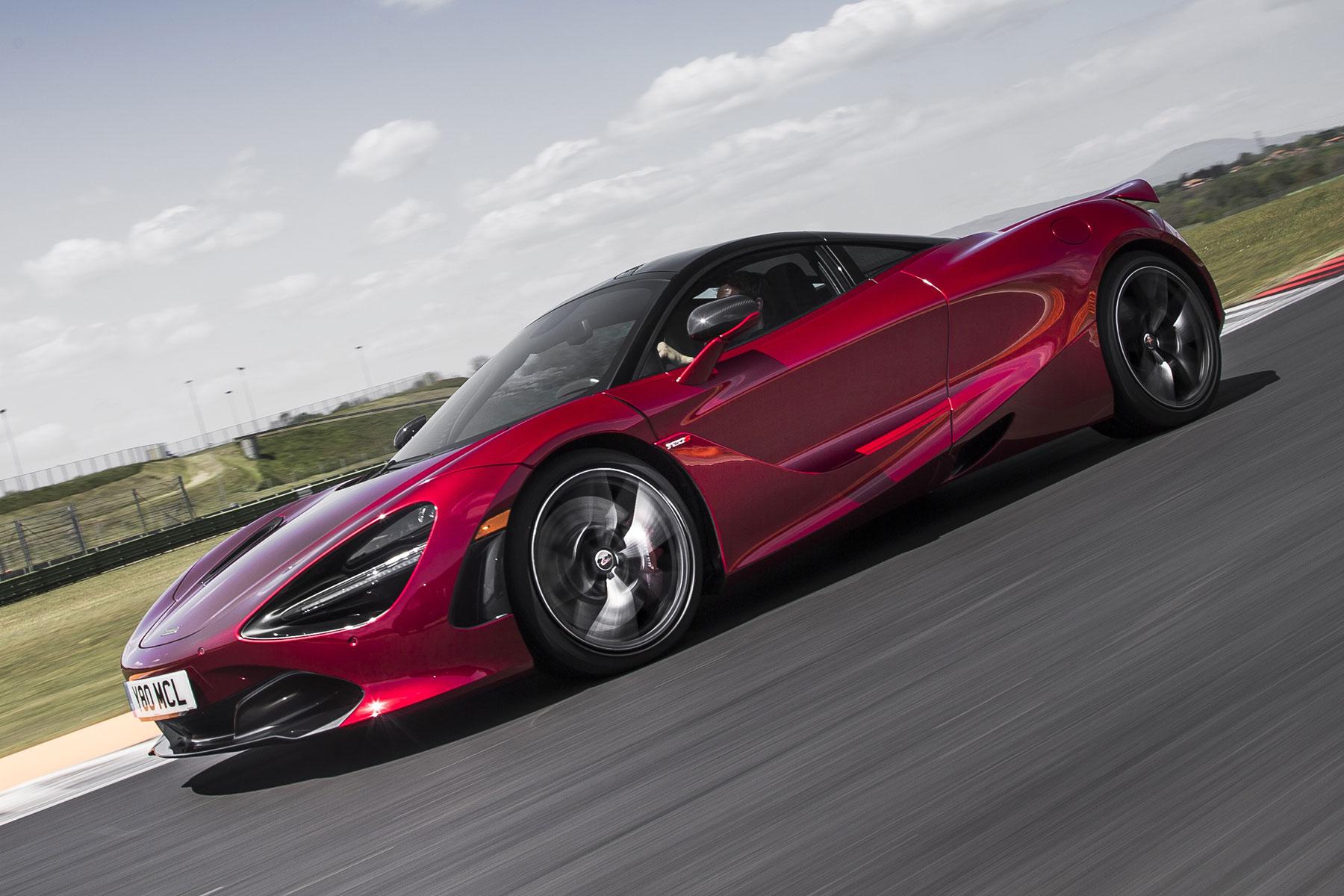
Remember the outgoing Ford Focus RS and its infamous Drift Mode? Well, the 720S has a more advanced version of the same thing.
Variable Drift Control offers seven-stage adjustment for the stability control, allowing you to decide how much the car will oversteer before the electronic nanny intervenes. There’s even a graphic on the touchscreen to select your angle of attack.
Now, I’ll level with you. Variable Drift Control or not, I’m not a good enough driver to start sliding 720hp supercars on the road. My faith in technology only goes so far. However, MR’s Peter Burgess previously tried VDC on-track at Vallelunga and found it a “very effective tool”. He also noted that “ tyre smoking images you see are all taken with those systems fully disengaged”.
You could spend a LOT on carbon fibre
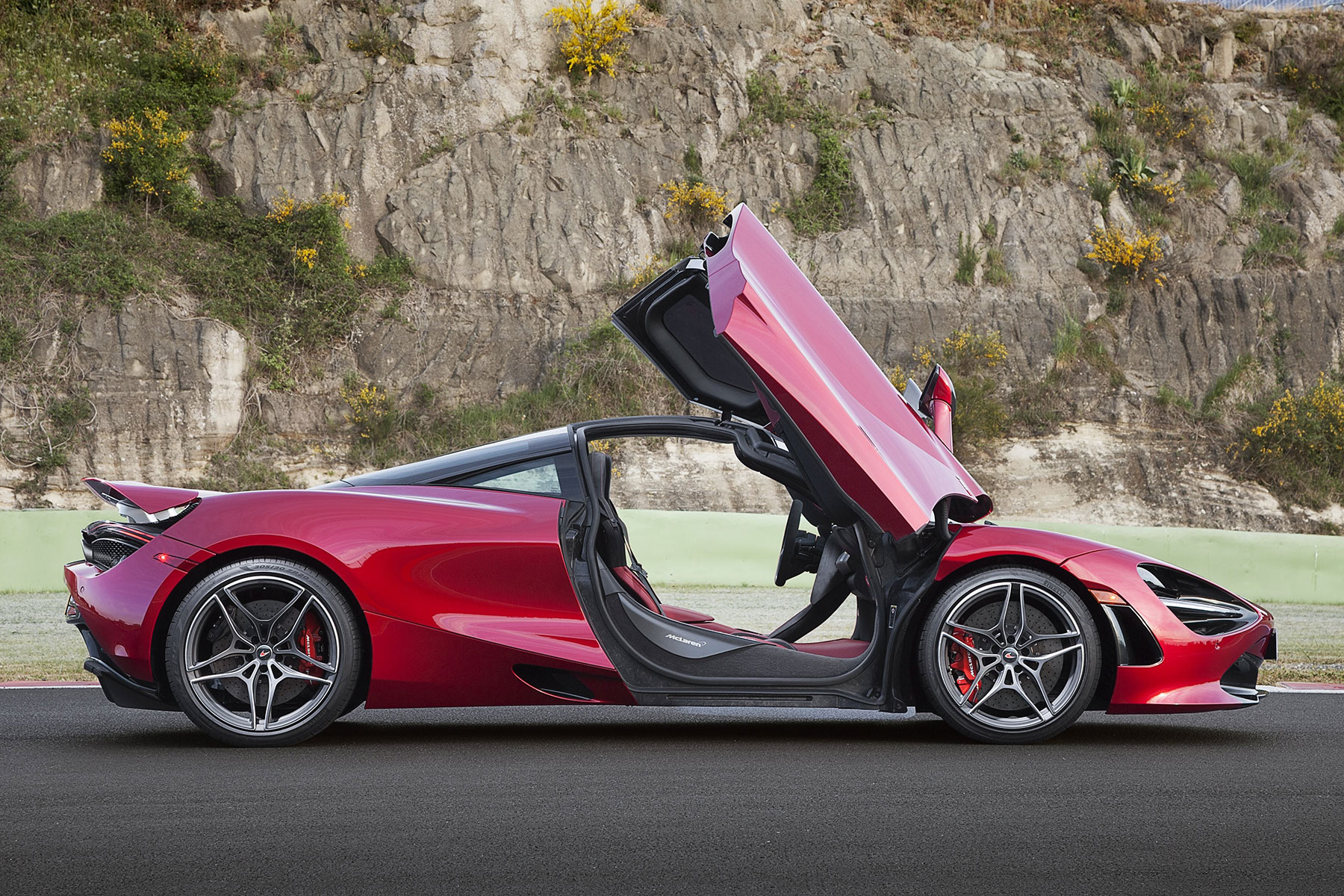
Got several hours to spare? Why not dream big with the McLaren 720S online configurator? As you’ll quickly discover, you can add tens of thousands to the base price with upgrades and accessories.
Our car – not pictured here – had custom paint from McLaren Special Operations (MSO) at £7,750, plus lashings of gratuitous unpainted carbon on the front air intakes and roof (Exterior Carbon Fibre Pack 3 – £3,770), body structure (£3,990) and sill panels (£2,620). Other extras included beautiful forged alloy wheels (£4,390) and the all-but-essential sports exhaust (£4,750).
As standard, the 720S has a four-speaker JVC Kenwood stereo that offers, according to McLaren, ‘the perfect blend between weight and performance’. Still, I’d willingly sacrifice a few kilograms (and £3,540) for the 12-speaker Bowers & Wilkins system fitted here. It’s a fitting accompaniment for the twin-turbo V8.
A week is not enough
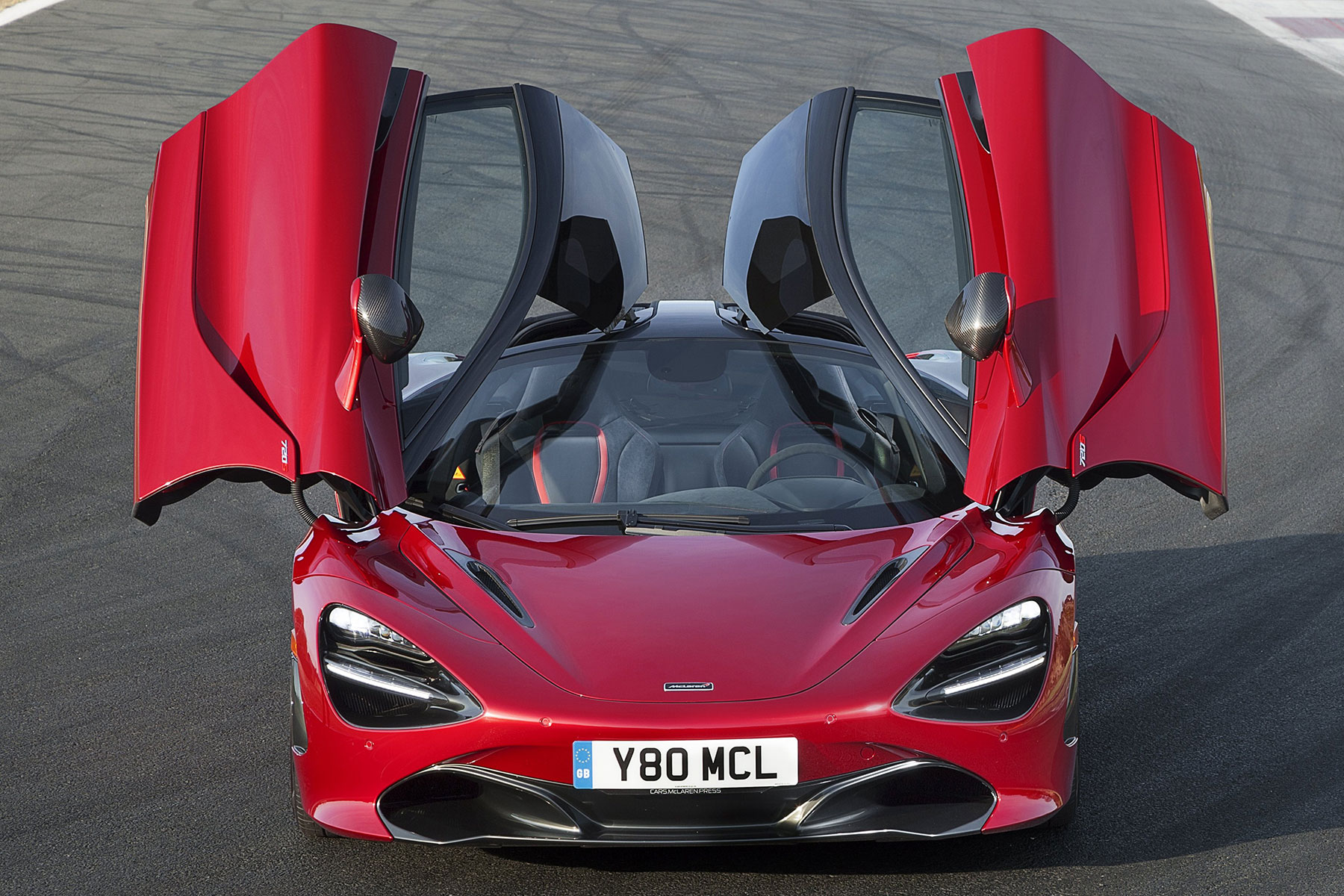
Spending seven days with the 720S was rewarding and revealing. During its time in our care, the McLaren tackled lengthy commutes, school runs, M25 tailbacks, London gridlock and even, yes, the odd B-road blast – and never felt less than sensationally special.
The Lamborghini Huracan Evo has the edge in terms of outright excitement. Perhaps the Ferrari F8 Tributo does, too: I haven’t tried one. But a Lamborghini isn’t a car you’d want to drive every day, and both the Italians have – to my mind – a rather divisive image. Being from somewhere as incongruous as Woking doubtless helps, but the McLaren seems to epitomise tech-led, wildcard cool.
Three years after launch, this is still our benchmark supercar. Driving it for seven days makes one weak.
[…] “Not this year, of course… But we are sensitive to this and I’d love my owners not to lose a penny. That said, depreciation is the most significant cost for any car owner, and very, very few cars actually appreciate. So the question is how much the individual is prepared to pay for the privilege of owning something like a 720S. […]
[…] “Not this year, of course… But we are sensitive to this and I’d love my owners not to lose a penny. That said, depreciation is the most significant cost for any car owner, and very, very few cars actually appreciate. So the question is how much the individual is prepared to pay for the privilege of owning something like a 720S. […]